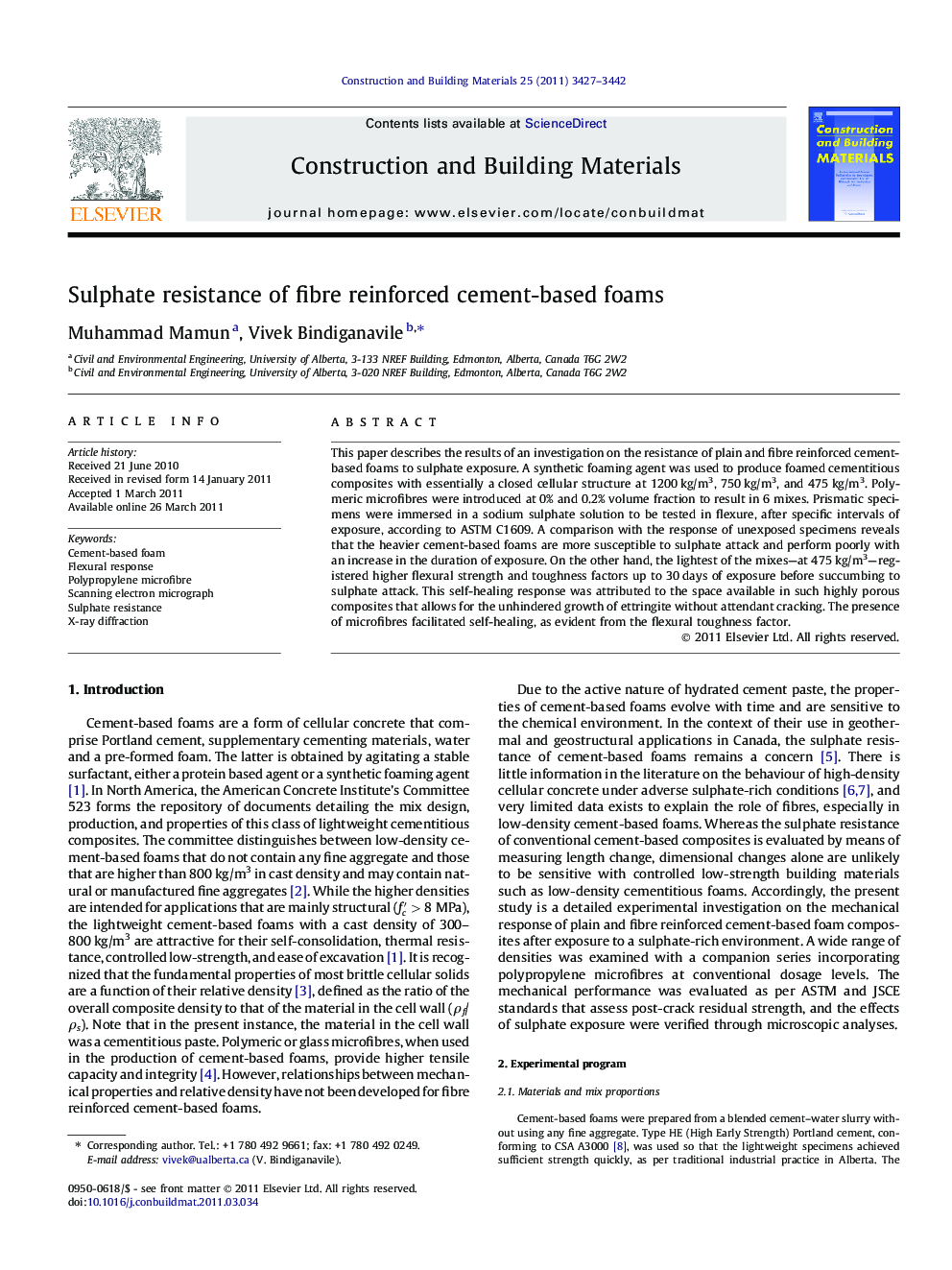| Article ID | Journal | Published Year | Pages | File Type |
|---|---|---|---|---|
| 259824 | Construction and Building Materials | 2011 | 16 Pages |
This paper describes the results of an investigation on the resistance of plain and fibre reinforced cement-based foams to sulphate exposure. A synthetic foaming agent was used to produce foamed cementitious composites with essentially a closed cellular structure at 1200 kg/m3, 750 kg/m3, and 475 kg/m3. Polymeric microfibres were introduced at 0% and 0.2% volume fraction to result in 6 mixes. Prismatic specimens were immersed in a sodium sulphate solution to be tested in flexure, after specific intervals of exposure, according to ASTM C1609. A comparison with the response of unexposed specimens reveals that the heavier cement-based foams are more susceptible to sulphate attack and perform poorly with an increase in the duration of exposure. On the other hand, the lightest of the mixes—at 475 kg/m3—registered higher flexural strength and toughness factors up to 30 days of exposure before succumbing to sulphate attack. This self-healing response was attributed to the space available in such highly porous composites that allows for the unhindered growth of ettringite without attendant cracking. The presence of microfibres facilitated self-healing, as evident from the flexural toughness factor.
► Mechanical performance of cement-based foams exposed to sulphate was assessed. ► Formation of expansive products leads to densification of cellular structure. ► Self-healing under sulphate exposure is more evident in lighter cement-based foams. ► Polypropylene fibre facilitates self-healing action in lighter densities.
